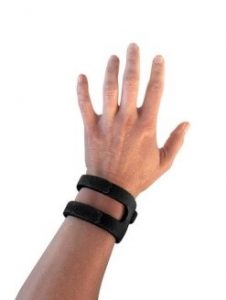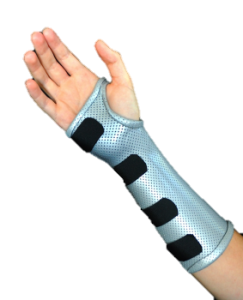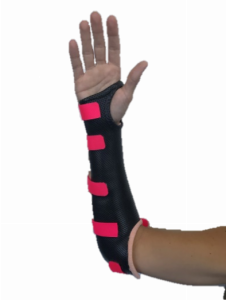Triangular Fibrocartilage Complex – TFCC
Do you suffer from wrist pain on the little finger side of your wrist but your X-rays or Ultrasound are normal?
One of the most common injuries we see in hand therapy is a pain on the little finger side of the wrist. The wrist can be excruciatingly painful but when the Doctor orders an X-Ray or Ultrasound, often nothing can be found! Many patients attend hand therapy feeling relieved that their wrist is not broken but are still wondering… what is the matter then?!? Often these patients will experience pain and/or clicking and clunking of their wrist when turning keys or door handles, lifting a bottle of milk from the fridge, picking up a coffee cup, pushing themselves up from a chair or bending their wrist to one side. They may also have swelling of the wrist and feel weak when gripping.
In many cases, the cause of this pain is an injury to the ligaments of the wrist (specifically the Triangular Fibrocartilage Complex, also known as the TFCC). These ligaments can be difficult or sometimes impossible to see using an X-Ray or Ultrasound, which explains why these scans rarely show the true damage. An MRI is the best test to show damage to these important ligaments.
Damage to the TFCC can occur in a number of ways. The most common causes is falling onto an outstretched hand, forcefully twisting the wrist or repetitive use. Some parts of the
TFCC heal more slowly because there is little or no blood supply.
In many cases, the TFCC may heal without surgery. Your doctor may prescribe anti-inflammatory medication, or in some cases a corticosterioid injection. You may also require a Wrist ‘Widget’ or Splint depending on how severe the damage is.
Wrist Widget Wrist Splint Wrist and Forearm splint
In severe cases, your Doctor may recommended surgery. This may involve removing the torn tissue fibres, reattaching a larger torn section of the TFCC or shortening the ulna. A splint is usually needed afterward, however the size and wearing schedule varies depending on the surgery. When your Doctor is happy with your progress, therapy will commence. Therapy may include ultrasound, moist heat, Inter-X and strengthening exercises to improve wrist stability. The focus of therapy is wrist stability.
If left untreated, these injuries can worsen over time and become chronic injuries.
If these symptoms sound familiar, please get in contact so that our therapists can assess your wrist and we can discuss treatment options with you.


